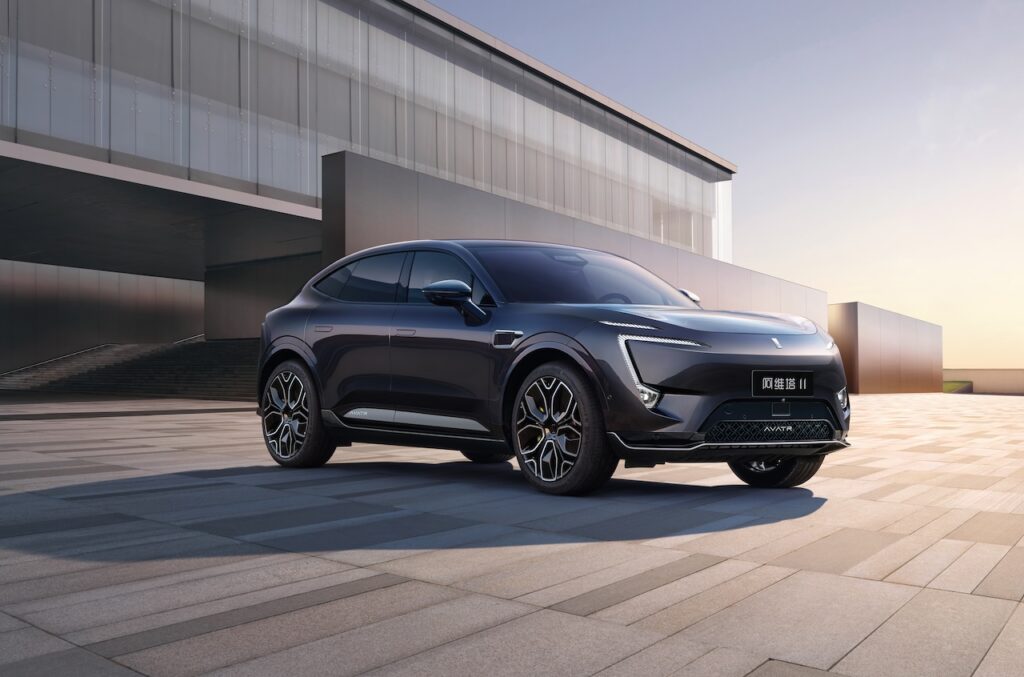
Australian readers are starting to hear more about Avatr Technology, a Chinese luxury electric vehicle brand that could step into Australia’s prestige EV segment. Avatr is positioning itself as a premium alternative to established luxury names and China’s own Denza and MG IM, with a lineup that blends pure battery electric propulsion with extended-range options and a high-tech approach backed by a trio of heavyweight partners. Here is what we know, what it could mean for Australian buyers, and how the brand sits in the global EV landscape as of 2025.
Who is Avatr and why is it relevant to Australia?
- Avatr is a joint venture led by Changan Automobile, a state-supported automaker, with battery specialist CATL and Huawei supplying advanced safety and infotainment technology. The arrangement signals a strong emphasis on range, battery performance, and connected-car capabilities.
- In China, Avatr has launched four models since 2022: the medium 11 fastback, the large 12 liftback, the medium-sized 07 SUV, and the 06 sedan, with each offering both full battery electric (EV) and range-extended electric vehicle (REEV) configurations, as well as all-wheel-drive (AWD) and rear-wheel-drive (RWD) variants.
- For Australian readers, Avatr’s entry would place it in a space alongside BYD’s Denza brand and MG’s IM, with additional competition coming from traditional luxury marques (Mercedes-Benz, BMW, Audi, Lexus) and competing prestige imports.
What Avatr has said about Australia and the broader export push
- Zhao Fei, General Manager of Changan Automobile Group, publicly confirmed plans to bring Avatr to the Australian market during a presentation at Changan’s Munich motor show preview. He indicated conversations with Australian authorities (including the Australian consulate in Chengdu) about how to establish a presence here.
- An Inchcape Australasia spokesperson acknowledged ongoing exploration of opportunities but did not announce any specific distribution plans for Avatr in Australia. The comment emphasized that Changan’s innovation and global growth are driving the exploration, but there were no immediate announcements for Australian distribution.
- Beyond Australia, Avatr has outlined a broader export strategy. The brand has talked about launching in the UK with right-hand-drive (RHD) specifications by the end of 2025, with the flagship 11 SUV to be produced in a new plant in Thailand. The 12 saloon and 07 SUV are also slated for assembly in Thailand from knock-down kits. These steps fit a pattern of region-by-region rollout designed to test and scale supply chains for international markets.
- In Munich, Avatr presented the Vision Xpectra concept, a 5.8-meter-long show car that showcases the brand’s design language, “The Energy Force,” and an AI-powered interior ecosystem centered on a feature called “the Vortex.” It signals Avatr’s intent to couple premium design with high-tech in-cabin experiences as part of its long-term product strategy.
Understanding Avatr’s model lineup and technical approach
- Avatr 06: A compact to midsize model that offers both EV and REEV configurations, with a dual-motor (AWD) option in higher specs. Reported range figures in official Chinese cycles (CLTC) suggest a flexible approach to energy use, depending on drive configuration and battery pack. Battery options include LFP chemistries with capacities around 72.88 kWh and larger packs in the 31.7-45.06 kWh REEV modules, plus a larger 72.88 kWh EV pack for long-range performance. In terms of power, the EV variants are claimed around 252 kW (RWD) to 440 kW (AWD), with robust torque to match.
- Avatr 07: A mid-size SUV with similar dual-motor options and battery configurations, offering competitive EV ranges and a larger footprint compared with the 06. The EV energy store is around 82.16 kWh for the base pack, providing CLTC ranges around 650 km for RWD and slightly lower for AWD variants, depending on regime.
- Avatr 11: A flagship SUV that sits at the top end of Avatr’s lineup, with multi-motor performance variants (RWD and AWD) and a substantial battery capacity (around 116 kWh in the EV configuration) to support longer real-world ranges. The REEV option features a 39.05 kWh module, with CLTC ranges indicating extended total range when combined with internal combustion range-extender capability.
- Avatr 12: A larger sedan/SUV model with a long wheelbase designed for comfortable, high-speed touring. Battery options include around 39.05 kWh REEV packs and a 94.53 kWh EV pack, with claimed CLTC ranges that reflect a focus on long-distance capability and high-speed performance in both RWD and AWD configurations.
What Australia can expect in terms of pricing, supply, and competition
- Pricing expectations: In China, Avatr models have ranged roughly from the equivalent of AU$66,000 to AU$135,000, depending on model, trim, and powertrain. Export pricing to Australia will depend on local tariffs, shipping, distribution costs, and any Australian safety or homologation requirements. Given the premium positioning, Avatr would likely compete with established prestige models and upcoming Chinese entrants in the AU market.
- Supply and localisation: Avatr’s UK push toward RHD and Thai assembly for a number of models indicates a strategy of reducing lead times and importing regional variants from production hubs. If Australia follows a similar pattern, local stock could be supported by regional assembly or import channels designed to minimize wait times for customers.
- Service and charging: A successful entry depends on service network coverage and parts availability. Huawei’s in-car tech is a selling point for connectivity and safety features, but long-term ownership requires accessible service infrastructure and parts supply across major Australian cities and regional areas.
Market context: where Avatr sits among rivals
- Chinese prestige challengers: Denza and MG IM represent early prestige contenders with strong backing and Australia-facing distribution routes. Avatr would need to differentiate through a combination of technology, build quality, and aftersales support.
- Global luxury competition: Traditional luxury brands (Mercedes-Benz, BMW, Audi, Lexus) maintain strong dealer networks in Australia. Avatr will need to balance competitive pricing with compelling technology and brand perception to capture buyer interest in the premium EV space.
- Australian consumer considerations: Range, charging options, warranty, and service access will be pivotal. Australians increasingly expect seamless digital experiences, robust local support, and a transparent pricing/ownership model that aligns with local incentives and charging networks.
What makes Avatr’s technology distinctive
- Huawei integration: Avatr’s partnership with Huawei signals a focus on advanced safety and infotainment technology, including over-the-air updates, connected-car features, and sophisticated driver-assistance capabilities that appeal to tech-savvy buyers.
- Battery strategy: By leveraging CATL’s battery technology (including LFP chemistries), Avatr aims to balance cost, safety, and range. The availability of both EV and REEV configurations offers flexibility for different ownership patterns and energy availability.
- Design language and interior vision: The Energy Force design language and the Vision Xpectra concept illustrate Avatr’s intent to fuse bold exterior styling with AI-powered interior experiences, signaling a premium, future-facing proposition.
What this could mean for Australian buyers
- Options for premium EV buyers: If Avatr arrives, Australian buyers would gain another premium option with a Chinese luxury badge, potentially offering strong value in terms of technology, battery efficiency, and performance.
- Comparative considerations: Prospective buyers would weigh Avatr against Denza, MG IM, and established luxury brands on the basis of price, service availability, network coverage, and the perceived value of in-car technology and safety features.
- Long-term outlook: Avatr’s expansion into export markets, including potential RH-drive models for the UK by 2025 and assembly in Thailand for certain models, suggests a scalable approach that could translate into a reasonable lead time for Australia if regulatory and logistics conditions align.
Conclusion
Avatr represents a bold foray by a Chinese luxury EV brand into the Australian market, aiming to combine premium design, AI-driven technology, and flexible powertrains with international manufacturing and assembly strategies. While formal announcements for Australia are still pending and local distribution partners have issued cautious statements, Avatr’s strategic moves in Europe, the UK’s RHD plans, and Southeast Asia assembly plans signal a measured, scalable approach to international expansion. Australian buyers and industry watchers should stay tuned for official confirmations from Avatr and Australian distributors, along with details on pricing, availability, service networks, and delivery timelines as they emerge.
FAQs
When is Avatr expected to arrive in Australia?
The Australian launch has not been officially announced by Avatr or a local distributor. As of mid-2025, Avatr has publicly discussed expansion into export markets and has signaled plans for markets like the UK (RH drive) and Thailand for assembly, with Australian discussions ongoing. Watch for formal confirmation from Avatr and local partners.
Which Avatr models might come to Australia?
Avatr has four models in its current lineup: 06, 07, 11, and 12, offering EV and REEV configurations. If Australia proceeds, initial local availability could align with the variants most suited to Australian conditions, energy infrastructure, and regulatory approval timelines. The exact model mix and trims would be announced by the importer closer to launch.
What technology features set Avatr apart?
Key differentiators include Huawei-powered safety and infotainment tech, CATL battery technology with LFP chemistries, and a design language that blends bold exterior styling with AI-driven cabin experiences (as showcased by the Vision Xpectra concept and the Vortex AI interface). Availability in Australia would depend on local homologation and service support.
How will Avatr be priced in Australia, and what about servicing?
Pricing will depend on local import costs, taxes, and any incentives. Avatr’s premium positioning suggests a higher price tier relative to mainstream EVs, with potential competition from Denza, MG IM, and luxury brands. Service and parts availability will hinge on the chosen Australian distributor’s network and any regional service hubs established to support AV and Huawei-infused technology.
What challenges could Avatr face in entering Australia?
Key challenges include securing an official distribution partner, establishing a nationwide service and parts network, aligning with Australian safety and homologation standards, and building brand recognition in a market dominated by established luxury marques and emerging Chinese premium brands. Regulatory timelines and right-hand-drive adaptation will also influence launch timing.
About EV Evolution
EV Evolution is the leading online platform dedicated to Australian electric vehicle owners and enthusiasts. We foster a vibrant community, delivering essential EV news and insights, and enhancing user engagement through our innovative, AI-powered chatbot for dynamic discussions. Our mission is to empower Australian electric vehicle owners and enthusiasts by fostering a vibrant, AI-driven online community that connects, informs, and advances the nation’s electric vehicle landscape.




